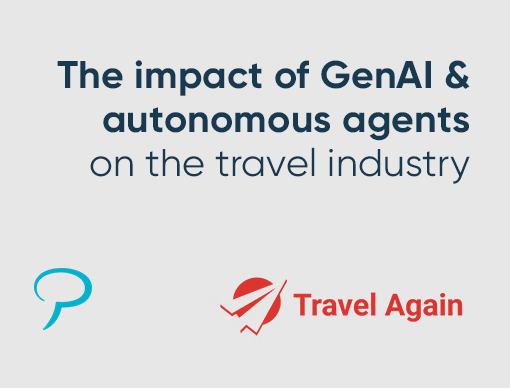Research Insights
Airlines vs. the World
Airlines vs. the World
- Published:
- January 2011
- Analyst:
- Douglas Quinby

Every three to five years, the civilized travel distribution world seems on the brink of upheaval, if not utter collapse. As airline-GDS distribution agreement renewals draw near, the rhetoric escalates, threats fly fast, and pundits provide no end of speculation about the pending distribution doomsday: the convenient multi-carrier shopping we have all come to expect through agencies will end. Airlines will pull out of GDSs and OTAs en masse, and travel agents and consumers must shop for and book fares directly with each individual airline.
In the past, despite all the chest-thumping, everything usually fell into place, with all parties giving up some ground and intermediaries (GDSs and agencies) accepting a reduction on the fee structure from suppliers. We are seeing the cycle repeat itself, with several airline-GDS contracts up for renewal in 2011 (including American Airlines').
Is anything really different this time around? Well, short term, not really; but long term, absolutely.
The Short Term: The Fight for $$$
The airline-intermediary war escalated this fall when American pulled its inventory from Orbitz in December (2010). American chose Orbitz to send a message to its major shareholder and GDS Travelport about the cost of distribution. Orbitz is collateral damage. Orbitz' contribution to the GDS company's segments is not insignificant: likely more than 10% of global segments and 20% of segments for the U.S. American's apparent determination to show Travelport that it does not need those Orbitz segments – true or not – is a powerful stick to wield at the negotiating table.
It also sends an unequivocal message to the industry: if it's a game of chicken you want, don't expect American to flinch. Expedia has preemptively called American's hand on this. Giving unusual support to a direct competitor on the issue, Expedia first pushed the airline's flights to the back of itsflight display, and then on New Year's day removed American's fares altogether. Neither side appears to be bluffing, so this game of chicken is quickly becoming a Mexican standoff.
Ultimately, we expect a resolution, with all parties giving some ground. Both sides still need each other – for the time being. In the meantime, the vitriol shall continue. It is quite likely other carriers, emboldened by American's actions, will enter the fray as their GDS agreements come up for renewal across 2011 and 2013 (yes, threaten to add booking surcharges to – or pull out altogether from – a GDS or OTA) and as they advance their distribution strategy (American may be out in front, but they are by no means alone). Delta has already done just that with three second-tier OTAs.
The Long Term: From Commodities to Merchandising (A Seat Is a Seat Is a Seat, Except When It Isn't)
Most media coverage of American's dispute with Orbitz, Travelport and Expedia has focused on the short-term issue – the distribution costs – but missed the bigger picture: airlines' long-term strategy to advance distribution from fare- and schedule-led selling to merchandising. Today, airfare shopping treats the seat as a commodity. The results display is fare- and schedule-led. In other words, it is price and schedule that largely drive the results display when travelers (or travel agents) enter their search criteria.
Airlines, with American leading the charge, want to change this. Leveraging their expanding array of ancillary services (and associated fees) for baggage, upgrades, onboard services, lounge passes, etc., they want to serve more tailored offers to provide a better customer experience and maximize their revenue per customer. In short, airlines want to transform themselves from suppliers of commodities to product marketers.
The Fight for Your Search Results
What does American's Direct Connect platform have to do with this? Today, when a consumer shops for airfares via a travel agency (online or off), the "shopping and faring" is handled by the intermediaries (the agency or the GDS). In other words, it is the software of the agencies and the GDSs that decide which flights and fares are displayed for a given search request. Airlines file their schedules and fares with ATPCO, and the agencies and GDSs search against those fares. Airlines have little say in what gets displayed to travelers.
American wants to change this. In its model, the search query would be passed from the agency to its Direct Connect, and they would determine what flights and fares to display. And American wants all intermediaries – whether an agency or a GDS – to access its content through its Direct Connect. The significance of this cannot be understated. This is nothing less than a battle for control of airfare search results.
The Bottom Line: Nine Unanswered Questions and Wildcards
While this strategic shift has enormous implications, it will not happen overnight. There are several important, complex and largely unanswered questions (plus some awfully big wildcards) that are central to the evolution of air distribution. Here is a quick list of nine key issues to watch for (Phocuswright continues to examine all of these issues in depth through its subscription research services):
Airline readiness: Most U.S. majors have expressed tacit support of American's efforts through the Open AXIS Group, a coalition of airlines and technology firms offering a new XML messaging standard for air distribution (and whose position paper, by the way, reads remarkably similarly to the AA Distribution Blog). However airlines are far from ready to switch off the old pipes and turn on the new en masse. Their ability to merchandise – to tailor offers and ancillary service bundles at the point of sale – is still in its infancy.
The commercial model for merchandising: How will agencies be compensated for ancillaries and bundled services? Who is going to invest in building the new connections to support new platforms? And what is the ROI for rewiring existing point-of-sale and mid- and back-office systems to support new types of airline offers? Most agencies do not make much money on air as it is, so the absence of a compensation model and a very cloudy path to realizing ROI on the necessary technology investments have raised many concerns among the agency community.
The Consumer: By the way, a whole lot of consumers just want to get from point A to point B as cheaply as possible. They really like fare- and schedule-led shopping and feel more like a hostage to ancillary fees rather than as valued customers. Consumers are frequently overlooked in the air distribution debate, but they still have a choice (so far). Southwest claims that its "Bags Fly Free" campaign is an example. Airlines will pursue unbundling, re-bundling and alternative connectivity, but ultimately they have to serve consumer demand and compete with one another in the process.
Comparability and travelers' rights: Several organizations, including the Business Travel Coalition, the Consumer Travel Alliance and the Interactive Travel Services Association, have raised valid concerns about the impact on travelers and reasonable access to comparing competing offers. As airlines seek more control over what fares and offers agencies present to travelers, agencies and consumers may not have access to all fares. American has stated that entities that use Direct Connect will have access to all content, but how can agencies be sure when it is the airline that is choosing which offers to display? And as more airlines unbundle, re-bundle and merchandise, how will agents and consumers be able to compare offers, when apples to apples becomes peanuts and pineapples? Agencies and consumers have good reason to be concerned.
Regulatory: With ancillary services and fees now part and parcel of the flying experience and mostly bookable only at check-in or mid-flight, efficient, online apples-to-apples comparisons of the total cost of flying is already breaking down. And that is where the Department of Transportation (DOT), which still holds broad regulatory powers, could step in. Should the DOT interpret airline merchandising or alternative connectivity as means to camouflage competitive pricing, they will take action.
Technology: Searching, analyzing and presenting useful results across multiple airlines and myriad possible flight combinations and offers is not an easy technical undertaking. Just ask anybody at ITA Software, Kayak, a GDS or OTA. Should intermediary-supplier connectivity splinter, there are very important questions about the technical capability needed to serve up effective results and support the current standards for online airfare shopping (i.e. sorting through billions of possible options across multiple sources and serving up relevant, available results in seconds). Definitely an unsexy topic for anybody not directly involved in airfare search and distribution technology, but at the end of the day it is the technology that makes this stuff happen – or not. This creates opportunity for innovation, but it also means the wholesale dissolution of the current distribution system and widespread adoption of direct connects will not happen overnight – if at all.
The GDSs: Legacy, slow, expensive – these are the terms observers often use to describe the GDSs in this debate. It may be true they have been slow to move, but they are also big, well resourced, and well entrenched within the distribution ecosystem. GDSs still hold a lot of leverage. As Phocuswright's Bob Offutt has presented in a series of analyses* in Phocuswright's Innovation Edition, the GDSs have also been ripping their guts out over the past few years to introduce new technical and commercial solutions to address changes in air distribution. The GDSs will continue to adapt – and acquire as need be – to keep their seat at the table.
The Economy: It is a lot easier for airlines to play hardball with improving demand and record load factors and profitability. But there's nothing like a recession, geo-political disaster or oil price surge (let's knock on wood to fend off all three, please) to send the best intended distribution strategies into a tailspin. Does anyone remember back in 2009 when Delta even offered to turn back the clock and pay commissions to some travel agencies? As the economy improves, and as long as they maintain discipline on capacity additions, airlines' position will only get stronger.
Google-ITA: This pending deal, of course, could change everything – for just about everybody. This topic alone has its own list of unanswered questions and wildcards.
2011 is going to be quite a year!
* GDS Analysis from Phocuswright's Innovation Edition:
• Global Distribution Systems Move Into The Future, Part One
• Global Distribution Systems Move Into The Future Part Two: The User Interface
• Global Distribution Systems Move Into The Future Part Three: GDS-Supplier Connectivity
• What Is A SuperPNR, And Why Is It Important?
• Evolution In Traveler Profiles











